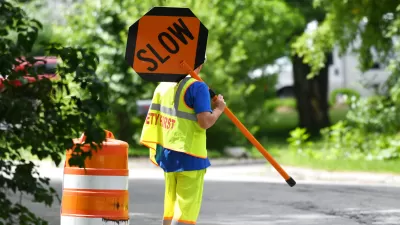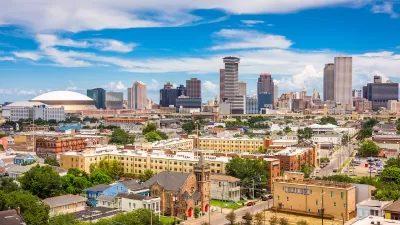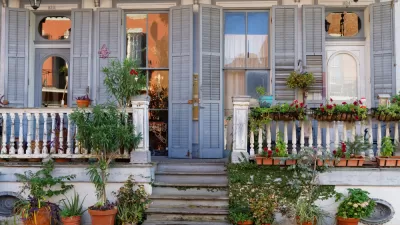By some counts, the number of homeless people in New Orleans has more than doubled since Hurricane Katrina struck in 2005. Aid workers are hoping a bill in Congress will bring extra aid to the struggling city.
"While many of the homeless do have addiction problems or mental illness, a survey by advocacy groups in February showed that 86 percent were from the New Orleans area. Sixty percent said they were homeless because of Hurricane Katrina, and about 30 percent said they had received rental assistance at one time from the Federal Emergency Management Agency."
"Not far from the French Quarter, flanking Canal Street on Claiborne Avenue, they are living inside a long corridor formed not of walls and a roof but of the thick stench of human waste and sweat tinged with alcohol, crack and desperation."
"By one very rough estimate, the number of homeless people in New Orleans has doubled since Katrina struck in 2005. Homelessness has also become a much more visible problem - late last year, Unity of Greater New Orleans, a network of agencies that help the homeless, cleared an encampment of 300 people that had sprung up in Duncan Plaza, in full view of City Hall. About 280 of those people are now in apartments, but others have flocked to fill several blocks of Claiborne Avenue at Canal, near enough to the French Quarter to regularly encounter tourists."
"Unity workers are hoping that Congress will include $76 million in the supplemental appropriation for Iraq to pay for vouchers that would give rent subsidies and services to 3,000 disabled homeless people."
FULL STORY: Resources Scarce, Homelessness Persists in New Orleans

Alabama: Trump Terminates Settlements for Black Communities Harmed By Raw Sewage
Trump deemed the landmark civil rights agreement “illegal DEI and environmental justice policy.”

Planetizen Federal Action Tracker
A weekly monitor of how Trump’s orders and actions are impacting planners and planning in America.

The 120 Year Old Tiny Home Villages That Sheltered San Francisco’s Earthquake Refugees
More than a century ago, San Francisco mobilized to house thousands of residents displaced by the 1906 earthquake. Could their strategy offer a model for the present?

Ken Jennings Launches Transit Web Series
The Jeopardy champ wants you to ride public transit.

BLM To Rescind Public Lands Rule
The change will downgrade conservation, once again putting federal land at risk for mining and other extractive uses.

Indy Neighborhood Group Builds Temporary Multi-Use Path
Community members, aided in part by funding from the city, repurposed a vehicle lane to create a protected bike and pedestrian path for the summer season.
Urban Design for Planners 1: Software Tools
This six-course series explores essential urban design concepts using open source software and equips planners with the tools they need to participate fully in the urban design process.
Planning for Universal Design
Learn the tools for implementing Universal Design in planning regulations.
Clanton & Associates, Inc.
Jessamine County Fiscal Court
Institute for Housing and Urban Development Studies (IHS)
City of Grandview
Harvard GSD Executive Education
Toledo-Lucas County Plan Commissions
Salt Lake City
NYU Wagner Graduate School of Public Service





























